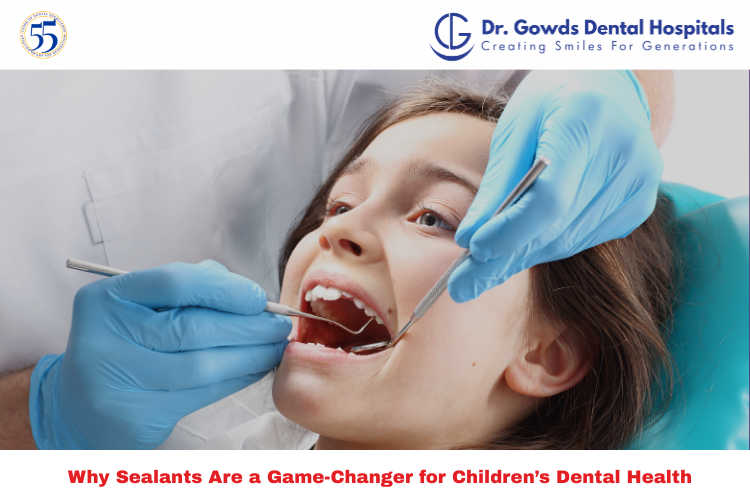Schedule Appointment




When it comes to protecting your child’s smile, nothing beats prevention. While brushing and flossing are important, they could be insufficient in preventing cavities—particularly in protecting the hard-to-reach areas of the back teeth. That is where sealants come into play! Sealants are one of the most effective preventative measures to improve children’s dental health and provide a second layer of protection against cavities. With the overview below, parents will understand why sealants for kids are very important and will be able to educate themselves toward protecting their children’s teeth for the future.
A sealant is a light, sometimes moisture proof, type of coat, made of plastic or dental type materials, that covers the occlusal surfaces (chewing surfaces) of the premolars and molars, which, as previously mentioned, are the areas where there are deep grooves and pits that are often too deep or narrow to clean properly with a toothbrush. These areas are also prone to collect food and bacteria that lead to dental decay and cavities.
Sealants work by providing a smooth cover over these areas, which limits access to plaque and acids. It also prevents bacteria from colonizing to support cavity causing processes within the occlusal grooves and pits of the teeth. This makes sealants a great adjunct to overall oral health for children.
Children’s teeth, particularly newly erupted permanent molars, are at greater risk of decay than adult teeth. The enamel of young teeth is still maturing, and, the grooves and pits in the chewing surfaces are prime hiding places for bacteria. Studies show that children with sealants on their molars can have up to an 80% reduction in cavities in those teeth compared to their peers without sealants.
In addition to preventing decay, sealants decrease the likelihood of fillings, crowns, and other more invasive (and sometimes expensive and frightening for kids) dental treatment. Sealants are also easy to apply, involve no pain, take only a few minutes per tooth, and, when cared for properly, can last for several years.
Applying sealants is a straightforward process:
The whole procedure is painless, requires no drilling or anesthesia, and children can usually resume normal activities immediately afterward.
Sealants can provide maximum protection when applied at the right time. Dentists typically recommend sealants when a child’s permanent molars and premolars first emerge, between ages 6 and 12. This is the time when a child’s teeth are most susceptible to decay. If schools of thought recommend early sealant application, this ensures a child will be protected throughout childhood and adolescence which are particularly vulnerable years for caries in children.
Sealants can also potentially be placed on baby teeth in select circumstances: if children have deep grooves in little teeth or if the child is particularly at risk for caries. However, focus has primarily been put on permanent teeth.
Although sealants are beneficial in protecting teeth, they are going to be most effective, when combined with brushing, flossing, and regular dental check-ups. Fluoride treatments reinforce children’s dental health by enhancing enamel and assisting in lessening the likelihood of cavities.
Parents can encourage their children to practice proper hygiene standards of brushing their teeth twice a day with fluoride toothpaste, daily flossing, and limiting sugary snacks, chocolates and drinks. Together, healthy dental hygiene standards and sealants will create a virtually impenetrable attack against cavities.
Yes, sealants are safe. They are proven and approved by the FDA, and it is a common practice for pediatric dentists to place sealants.
Sealants often last 5 to 10 years. They must be maintained through regular check-ups to monitor any loss of sealant or wear.
Yes, sealants can chip or wear away but can be replaced fairly easily during a dental visit.
Sealants are only applied to molars and premolars since these teeth have grooves that are prone to cavities.
No, sealants are just an additional barrier of protection. Brushing and flossing daily is still required.
Sealants are one quick, cheap, and effective way to enhance children’s oral health and prevent cavities. Sealants protect susceptible teeth against decay, so they should be an essential part of every child’s care. Prevention is key. Don’t wait for cavities to form; ask your dentist about sealants and help your child have a lifetime of oral health.
Book a consultation at Dr. Gowds Dental Hospital, Hyderabad, today.
Our Branches